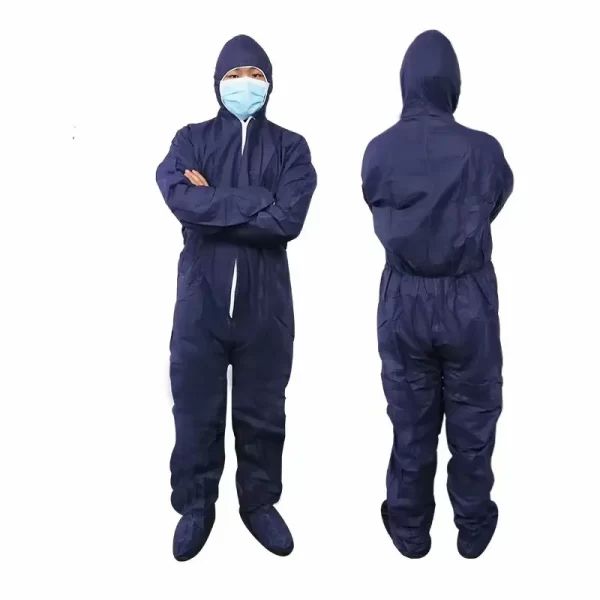How Polypropylene Coveralls Ensure Safety in Hazardous Working Environments
Subheadings:
- Introduction: Understanding Hazardous Working Environments
- Polypropylene Coveralls: A Safety Essential
- The Protective Properties of Polypropylene
- Polypropylene Coveralls in Practice: Industries and Hazards
- Assessing the Efficacy of Polypropylene Coveralls
- The Environmental Implications of Polypropylene Coveralls
- Conclusion: Polypropylene Coveralls – A Shield in Hazardous Workspaces
Introduction: Understanding Hazardous Working Environments
Every day, countless workers step into hazardous working environments that expose them to various dangers. These workplaces range from factories filled with airborne particulates to laboratories handling potentially harmful chemicals and construction sites prone to accidents from heavy machinery and materials. In these settings, maintaining safety becomes a complex issue, necessitating the use of personal protective equipment (PPE). Central to this line of defense are polypropylene coveralls, designed to create a protective barrier between the worker and the potential hazards present in their work environment.
Polypropylene Coveralls: A Safety Essential
Polypropylene coveralls serve as a guardian in perilous workplaces. Composed of a thermoplastic polymer, these coveralls not only offer full-body coverage but also provide an essential shield against a plethora of workplace hazards. A question thus arises – what makes polypropylene coveralls a safety essential in dangerous workplaces?
The Protective Properties of Polypropylene
The answer lies in the unique properties of the polypropylene material:
Chemical Resistance: Polypropylene boasts an excellent resistance to many chemicals, making the coveralls made from it an effective defense against potential chemical hazards. This feature is crucial in environments where workers are routinely exposed to chemicals that can cause harm through skin contact.
Moisture Resistance: Polypropylene is inherently hydrophobic, meaning it repels water. As such, coveralls made from this material provide a protective barrier in environments where liquid or semi-liquid splashes are a potential risk, preventing them from soaking through and reaching the wearer’s skin.
Particulate Barrier: These coveralls prevent small particles, such as dust or allergens, from reaching the wearer’s body, serving as an effective blockade in environments teeming with airborne particulates.
Lightweight and Comfortable: Despite their robust protective properties, polypropylene coveralls are lightweight and breathable. This comfort allows for extended wear, which translates into continuous protection for workers during their shifts. This balance between comfort and protection increases worker compliance in wearing PPE, thereby enhancing overall workplace safety.
Polypropylene Coveralls in Practice: Industries and Hazards
To fully appreciate the effectiveness and scope of polypropylene coveralls, we must examine their application across various industries:
Manufacturing: In the manufacturing sector, workers often face exposure to dust, grime, and non-hazardous chemicals. Here, polypropylene coveralls serve as a first line of defense, preventing these substances from coming into contact with the wearer’s skin or clothing.
Construction: Construction sites are rife with potential hazards. From dust clouds kicked up by heavy machinery to the grime and debris associated with construction work, these elements can all contaminate a worker’s skin and clothing. Polypropylene coveralls create a barrier that protects the wearer from these elements.
Pharmaceuticals: The pharmaceutical industry operates under stringent hygiene standards. Polypropylene coveralls reduce the risk of contamination, helping maintain the clean environment that’s crucial in pharmaceutical production. Furthermore, they protect workers from non-hazardous substances they might encounter.
Food Processing: In the food processing industry, safety is twofold – ensuring worker safety and maintaining food integrity. Here, polypropylene coveralls fulfill both roles. They prevent potential contaminants from reaching the food, and simultaneously, they protect workers from potential splash hazards.
Assessing the Efficacy of Polypropylene Coveralls
As with any PPE, it’s important to understand the limitations of polypropylene coveralls. They offer a high level of protection against non-hazardous substances and minor splash risks. However, for environments where there is significant exposure to dangerous chemicals or biohazards, additional or alternative protective measures may be necessary. PPE should always be chosen based on the specific risks associated with a particular work environment, and training should be provided to ensure proper use.
The Environmental Implications of Polypropylene Coveralls
When discussing polypropylene coveralls, we must also consider their environmental implications. As a type of plastic, polypropylene does raise certain environmental concerns, particularly around disposal. Fortunately, polypropylene is recyclable, and used coveralls can be collected and sent to recycling facilities where they are processed into new products. Research is also ongoing into more sustainable, biodegradable forms of polypropylene. These developments could help reduce the environmental impact of these coveralls in the future.
Conclusion: Polypropylene Coveralls – A Shield in Hazardous Workspaces
Polypropylene coveralls have emerged as a powerful ally in ensuring worker safety in hazardous work environments. With their ability to form a barrier against chemicals, moisture, and particulates, these coveralls significantly reduce the risk of exposure to a variety of workplace hazards. They are an essential part of a comprehensive safety strategy, helping to protect workers in industries from manufacturing to pharmaceuticals.
While they are not a silver bullet for all workplace hazards, polypropylene coveralls offer substantial protection and will remain a cornerstone of PPE in hazardous work environments. As we continue to understand and address the risks inherent in different work environments, the role of polypropylene coveralls is only set to become more crucial. By combining worker safety with ongoing efforts to reduce environmental impact, the future of polypropylene coveralls looks promising, demonstrating once again that when it comes to safety, innovation never ceases.
Please visit our website for more product details https://medposnonwoven.com/product/pp-nonwoven-coverall/

